
by Larry Williams | Feb 10, 2022
February can be a confusing month for North Florida gardeners. Winter isn’t over. So, don’t let spring fever cause you to make some gardening mistakes. Let’s take a look at some dos and don’ts of February gardening.
Despite colder temperatures that we can experience this month, it’s still okay to plant trees and shrubs from containers. The roots are better protected in the ground and will quickly grow outward to establish as compared to being exposed to cold temperatures above ground, confined in a container. But be cautious about planting cold sensitive tropical plants too soon while freezing weather is likely. Bare-root trees and shrubs should be in the ground promptly. This includes bare-root nut and fruit trees, pine and hardwood tree seedlings and bare-root roses. Dormant season planting allows time for establishment before hot weather arrives.
February is a good time to transplant or move trees and shrubs that are in the wrong place. Consider moving plants that require pruning to force them to “fit” into small or confined spaces. Move them to an appropriate location where they can grow to full size. Then you can plant something new and appropriately sized for replacement. Of course, they need to be reasonable in size to move.
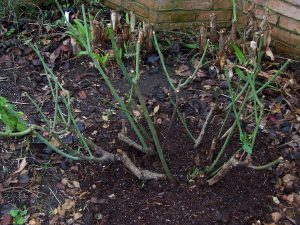
Bush rose plant correctly pruned. Photo credit: Matt Orwat
Late February is a good time to prune overgrown shrubs such as ligustrum and holly. These plants usually respond well to severe pruning, if necessary. But remember, they will eventually regrow to their larger size. Prune to shape and thin broadleaf evergreens and deciduous flowering trees such as oleander, crape myrtle and vitex. Avoid severely pruning narrow leaf evergreens such as junipers because they have few buds on old wood from which to form new growth. Mid-February is a good time to prune bush roses, removing dead or weak canes. Leave several healthy canes and cut these back to about eighteen inches. Delay doing much pruning on early spring flowering shrubs such as azalea until shortly after they flower. Pruning these plants now will remove present flower buds before they can open. Prune deciduous fruit trees such as peach, plum and apple. Now is also the time to prune ornamental grasses such as muhly grass.
If your lawn has a history of problems with summer annual weeds such as crabgrass, apply a preemergence herbicide. This should be done February 15 to March 1 when day temperatures reach 65° to 70°F for 4 or 5 consecutive days. A second application may be needed eight weeks later. Many people fertilize their lawns too early. Wait until mid-April to fertilize to prevent lawn injury and for the most efficient use of the fertilizer.

by Larry Williams | Aug 14, 2020
Oleander caterpillars, which are active on some oleanders during summer, can provide a number of gardening lessons.
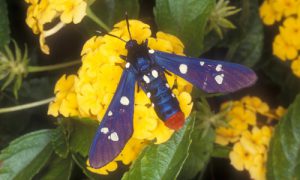
Oleander caterpillar moth on lantana flower. Photo credit: James Castner, UF
The adult moth is striking in appearance. The bluish to purplish moth has white dots on its black wings. The moths resemble wasps as they fly in and around oleander shrubs.
It’s the orange caterpillars with black spots and black hairs that cause problems for some gardeners.
Caterpillars are the larval stage of butterflies and moths. In order to enjoy watching butterflies and moths feeding on the nectar of flowers, some of the caterpillars must survive to become adult butterflies and moths. This is lesson number one.
Oleander caterpillars usually only feed on oleander plants. Oleanders are native to areas of Europe and Asia. This is lesson number two.
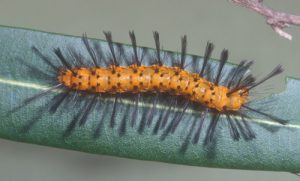
Oleander caterpillar, Photo credit: Paul Choate, UF
Oleander caterpillars benefit by us planting their food source in Florida.
This relationship between pest and plant is referred to as the key plant, key pest concept. Some other examples include St. Augustinegrass and chinch bugs, gardenias and whiteflies, crape myrtles and crape myrtle aphids, azaleas and azalea caterpillars, camellias and tea scale, roses and black spot, pecans and pecan scab, squash and squash vine borers.
Understanding this concept can be helpful in designing a “low maintenance” landscape.
When you plant roses, you plant everything that goes with roses, including the time and money required to maintain them. This applies to St. Augustinegrass, pecan trees, squash and oleanders. This is lesson number three.
Oleander caterpillars can temporarily damage the appearance of oleanders. But they cause no long-term damage for the plant. This is lesson number four. The damage is aesthetic. Oleander caterpillars can consume great numbers of leaves. However, if the plant is otherwise healthy, new leaves will be produced and the plant will continue to grow. The damage is temporary; there will be no evidence the plant ever had a problem.
To spray or not to spray for oleander caterpillars has to do with a person’s tolerance level.
If you can’t tolerate having oleander caterpillars around and the temporary aesthetic damage they cause, consider the use of Bacillus thuringiensis. It is sold under a number of brand names and many times is referred to as Bt. This bacterium only controls caterpillars so it is friendlier for the beneficial insects. When using any pesticide, always follow the label directions and precautions.
Here are links to UF/IFAS Extension publications with more info.
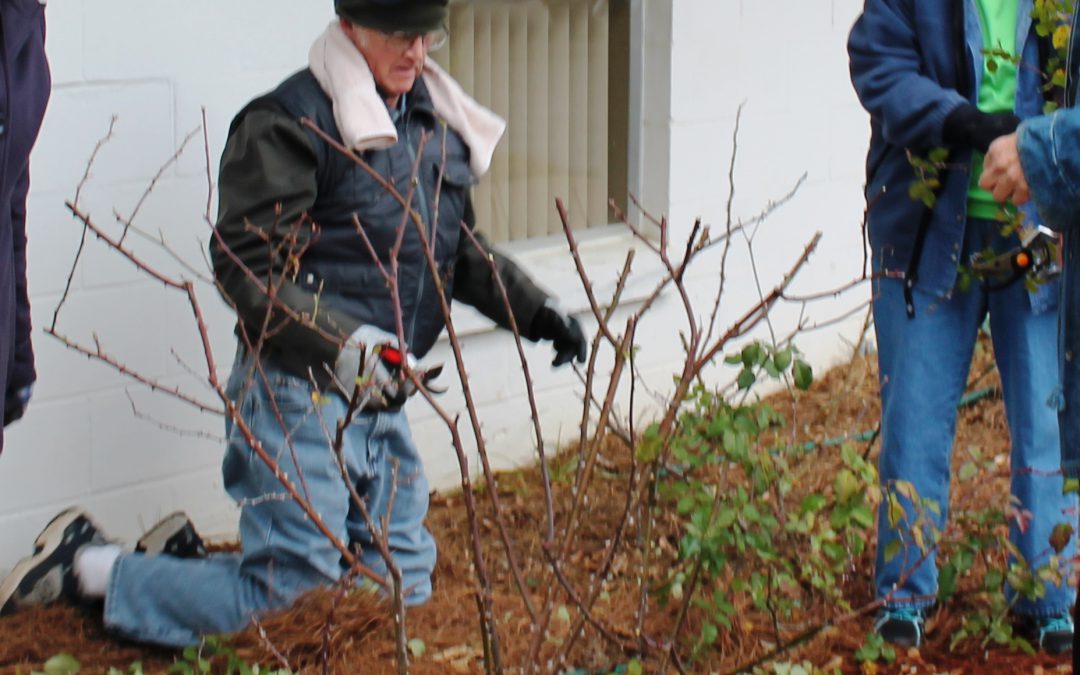
by Matthew Orwat | Mar 3, 2015
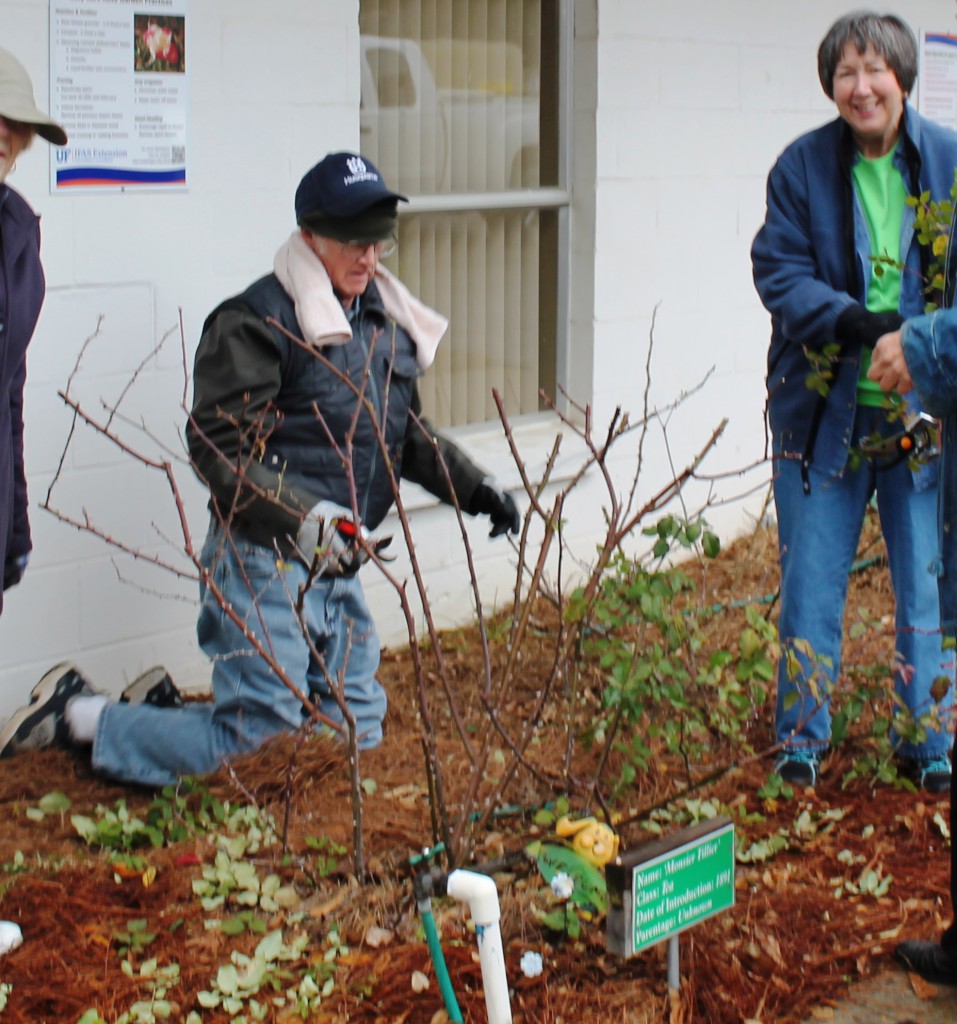
The process of pruning roses. Image Credit Matthew Orwat
Many rose enthusiasts ask every season? When do I prune my roses? The general recommendation is February 15th. If that recommendation is followed it’s usually not harmful, though climate can be very different from the coast to the state line . Therefore, my typical answer is to advise gardeners to prune roses when the Azaleas are in bloom. Typically, Azaleas are in full bloom or have finished blooming by the beginning of March. In many areas of the Florida Panhandle this year, they have not started due to late season freezes.
March 1st it is time to prune repeat blooming roses regardless of the condition of the Azaleas, so that gardeners will enjoy a few spring bloom cycles before the heat sets in.
When pruning roses there are several factors that need to be considered. First is the type. Is the rose a Hybrid Tea, Floribunda, Old Garden Rose, Shrub or Climber? Is it once blooming or repeat blooming? Once blooming roses and many repeat blooming climbers perform best if pruned after the spring display. This ensures the largest amount of bloom possible.
Hybrid Teas, Floribundas and their ilk are usually pruned back at least by half, keeping the strongest 4-8 canes and removing old, diseased, damage or non productive wood near the base or juncture of a large cane.
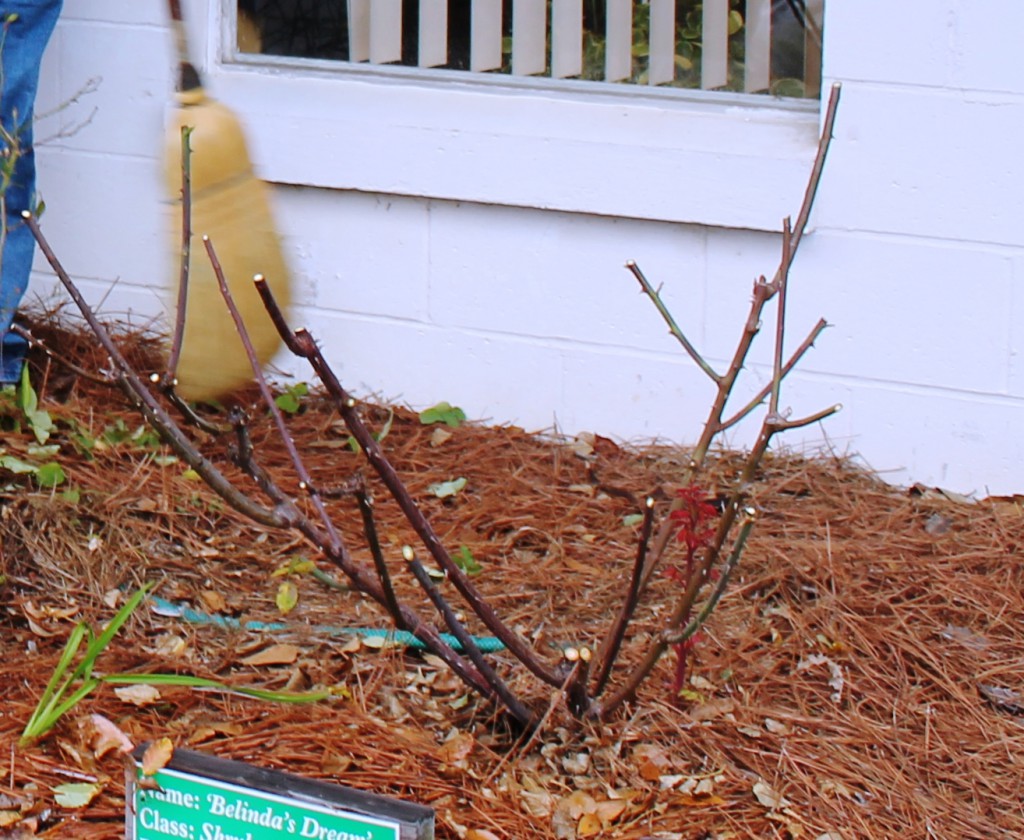
Typical “light” pruning of a Hybrid Tea or Floribunda. Image Credit Matthew Orwat
Old garden roses are seldom pruned hard. The best method in pruning old garden roses is to remove dead, old or unproductive wood, and eliminate crossing branches and excessive inward growth. This opens up the plant and allows for increased airflow, which reduces disease incidence. Once the plant has been “opened up” it may be pruned back by 1/3 to 1/2. Pruning back Old Garden Roses by 1/3 to 1/2 is not necessary but is often done for space considerations.
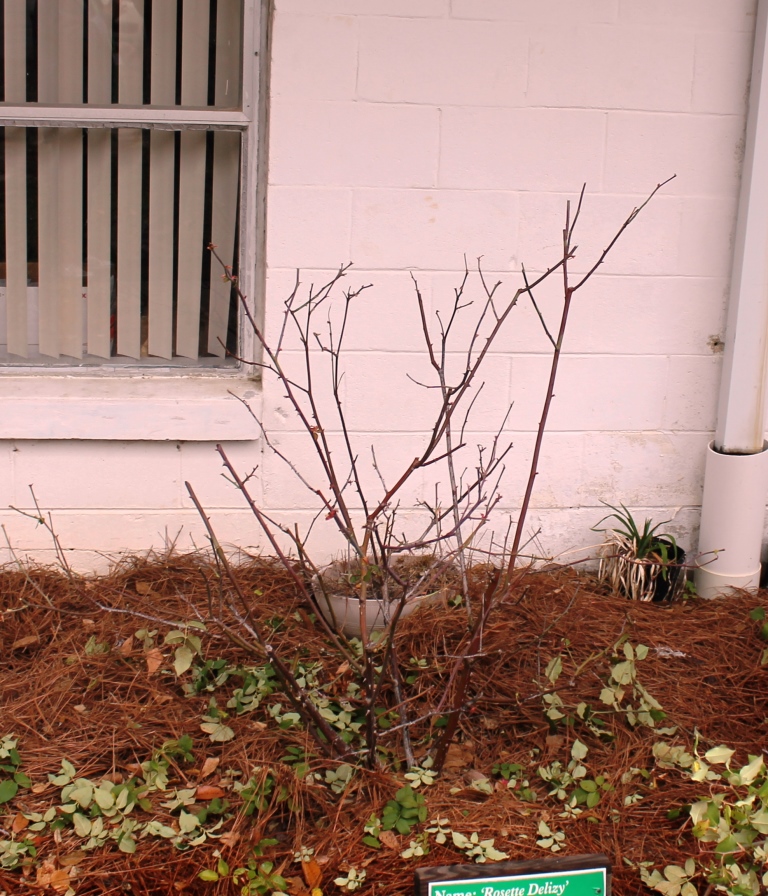
A lightly pruned old garden rose. Image Credit Matthew Orwat
Many Shrub Roses, such as Knockout, and various Old Garden Roses are trimmed several times a year with hedge trimmers. This is often the only pruning done except for the annual removal of dead or non-productive wood.
Additionally, roses benefit from the removal and disposal of any remaining leaves after the completion of late winter pruning. This helps reduce disease carry over from the previous year and induces a short dormant period.
Along with pruning it is often advantageous to spray with a dormant fungicide spray, such as Lime-Sulfur. This can be found at farm supply stores or nurseries and must be applied according to label directions. It is especially important to cover the skin when using this product, since the sulfur component is caustic to skin in its concentrated form. It will also burn any new growth, so it can only be used during the dormant season.

by Taylor Vandiver | Feb 17, 2015
Valentine’s Day has come and gone. You were likely showered with gifts from loved ones; gifts covered in chocolate, gifts of the stuffed variety, and more than likely the kind covered in petals. And as you languish in the afterglow of affection it would be wise to remember that your bouquets will need to be shown some affection if you intend for them to remain beautiful.
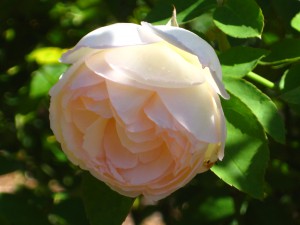
Duchesse de Brabant, Tea Rose. Photo Courtesy David Marshall.
Fresh cut flowers are a popular gift for Valentine’s Day and a simple, yet elegant way to relay your affections. Flowers have the capacity to brighten up a room and bring a smile to your face. The myriad of colors and scents are admittedly irresistible. However, after a few days your once overflowing vase may seem wilted and despondent. Follow these easy steps to increase the lifespan of your flowers and extend their potent powers!
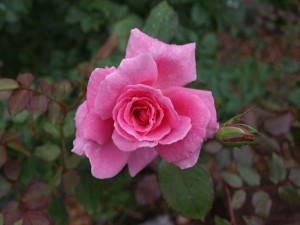
Carefree Beauty, Shrub Rose. Photo Courtesy David Marshall.
- Re-cut the flower stems using a sharp knife or shears. Remove at least one-half inch of stem to expose a fresh surface. Stems, especially rose stems, should be re-cut under water. A freshly cut stem absorbs water freely, so it is important to cut at a slant to avoid crushing the stem and to prevent a flat-cut end from resting on the bottom of the vase.
- Put flowers in water as soon as possible. Maximum water uptake occurs in the first 36 to 48 hours after cutting flowers. Place stems in 100-110°F (38-40°C) water, because warm water moves into the stem more quickly and easily than cold water.
- Make sure to remove any leaves from the stem that may be submerged. Because transpiration through leaves drives water flow up the stems of cut flowers, don’t strip all the leaves from the stem.
- Use a commercial flower food, they work best at controlling microbial populations, hydrating stems, and feeding flowers. Make sure you follow the directions on the floral preservative packet.
- Removing thorns from your roses may shorten their vase life. If damaged during the removal process flowers may be opened up to microbes that could slow down water conducting cells.
- If your vase solution begins to become cloudy, re-cut the stems and place into a new vase solution.
- Do not place flowers in direct sunlight, over a radiator, or on a television set. Heat reduces flower life since flower aging occurs more rapidly in high temperature conditions. It is important to avoid all drafty locations because warm or moving air removes water from flowers faster than it can be absorbed through the stems.
- Keep flowers away from cigarette smoke and ripening fruit, because they contain ethylene gas, which is harmful to flowers.
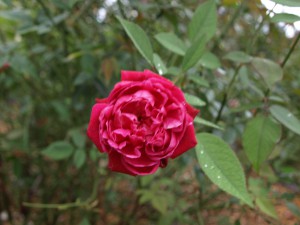
Louis Philippe, China Rose. Also known as the “old Florida rose” since it is found at many old historic Florida home sites and pioneer settlements. Photo Courtesy David Marshall.
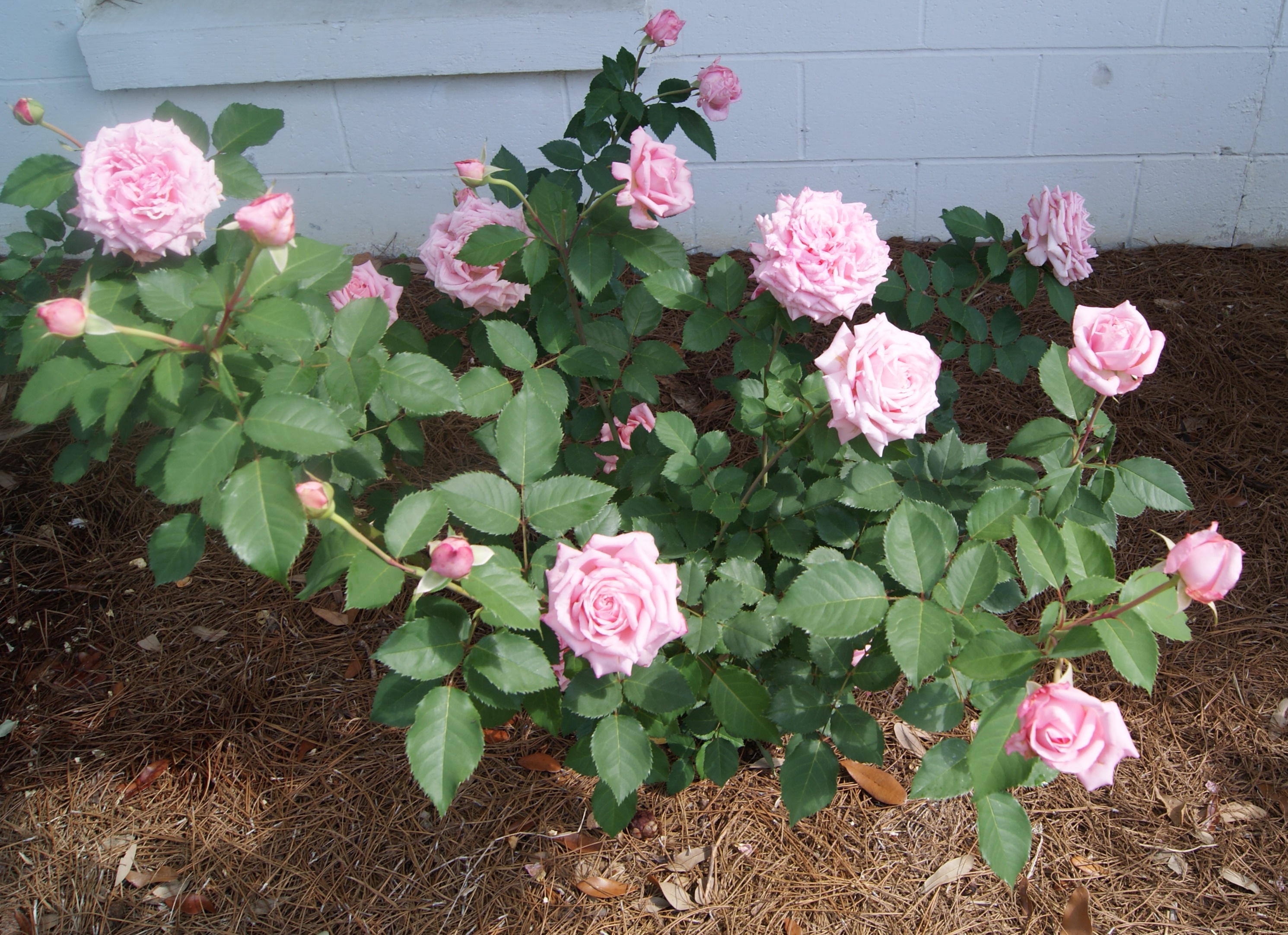
by Taylor Vandiver | Feb 25, 2014
Considering it is the month of Valentine’s, roses are an appropriate subject to discuss. Not bouquets couriered to various locations all over town, but bushes in the landscape that have been strategically neglected over the winter. Now their time has come; pull on the gloves and get to work.
February is the perfect time to prune rose bushes. Pruning is a step that is required to maintain healthy roses. When roses are pruned, new growth is promoted by removing dead, broken or diseased canes. Pruning also allows the gardener to give their plant an attractive shape and encourage flowering, which is ultimately the reason roses are planted!
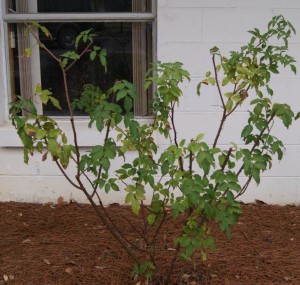
Belinda’s Dream rose before pruning. Image Credit Matthew Orwat
Deciding which roses to prune will depend on their class. Hybrid tea, grandiflora and floribunda roses are repeat bloomers and need a moderate to heavy annual pruning this time of year. Some old-fashioned roses and climbers that bloom only once a year should be treated differently and pruned immediately after flowering. They set their buds on old wood from the previous year’s growth; therefore, pruning them would remove most of this year’s blooms. An exception to this would be dead, diseased or damaged wood on any rose bush or canes that are crossing and rubbing. This should be removed immediately upon notice.
There are certain techniques that should be used when pruning any type of rose, no matter the time of year. Any pruning shear, saw or lopper you use should be sharp and sterile. Always wear protective gloves when dealing with roses, unless you don’t mind coming back bloody and mangled.
[warning]
Crown gall and canker can be spread between gardens and individual plants by dirty shears. To prevent the spread of disease, always disinfect pruning shears when beginning to prune with a 5-10% bleach or 20% rubbing alcohol solution, especiallly if they have been used in any other garden. If crown gall or canker has been found in one’s own garden, shears should be disinfected between each plant, no exception. This should also occur when bringing new plants into the garden, until they have been observed to be disease free.
[/warning]
The first step when pruning any rose is to remove dead, damaged or weak stems leaving only the most vigorous, healthy canes. Try to cut the stems one inch below darkened areas, making sure to cut back to green wood. Always make your cut at a 45-degree angle; this will keep water from sitting on top of a stem and causing rot. When pruning try to open up the center of the rose bush. Pruning like this will increase air circulation and help prevent diseases.
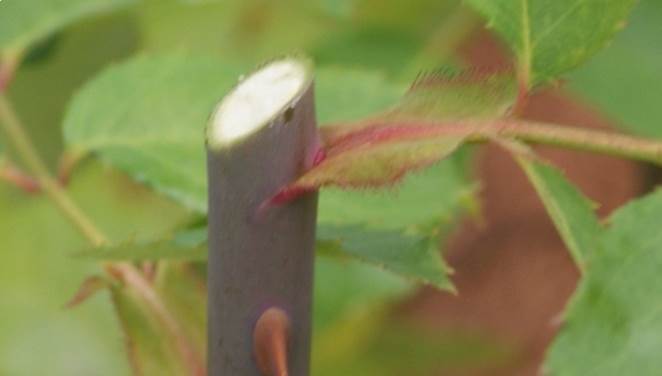
Pruning Cut on Belinda’s Dream rose. Image Credit Matthew Orwat
Since roses send out new growth from the bud just below a pruning cut, try to make pruning cuts above a leaf bud facing out from the center of the plant. Make your cut about ¼ inch above the bud and at the same angle as the bud. If any rubbing or crossing branches are noticed, the weakest of those branches should be removed.
Deadheading, or removing spent flowers, can also be done at this time of year. When deadheading, remove the flower by making a cut just above the next five or seven-leaf branch down on the stem. This will allow for a strong and healthy cane to grow in its place. If no live buds remain, remove the entire cane.
Modern reblooming roses (hybrid teas, floribundas, and grandifloras) should be pruned just as the buds begin to swell, which is around mid to late February. When practicing hard pruning, try to leave about four to eight large, healthy canes the diameter of your finger or larger on the shrub. For a more moderate approach, prune shrubs as discussed earlier and cut them back to about 12 to 24 inches from ground level. Generally, any cane thinner than a pencil should be removed.
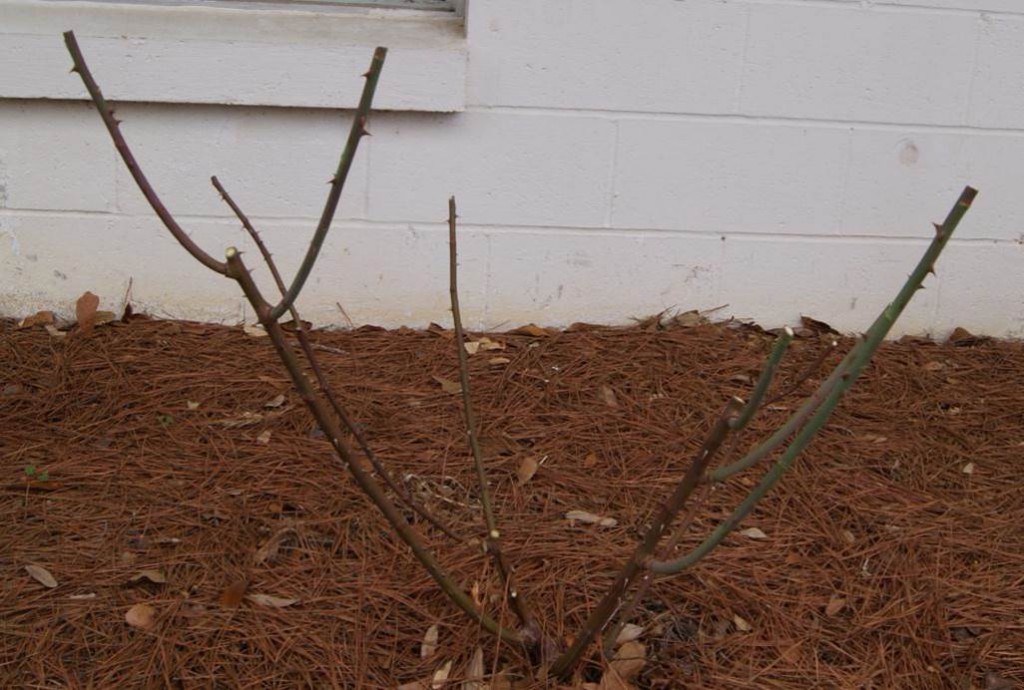
Belinda’s Dream rose after pruning. Image Credit Matthew Orwat
Don’t worry about pruning recently purchased new roses. Newly purchased roses have most likely been pruned, and no further cutting is necessary. Hopefully with the help of this article you can make a date to spend some quality time with your roses this season. The price of neglect is overgrown roses that are not nearly as attractive.
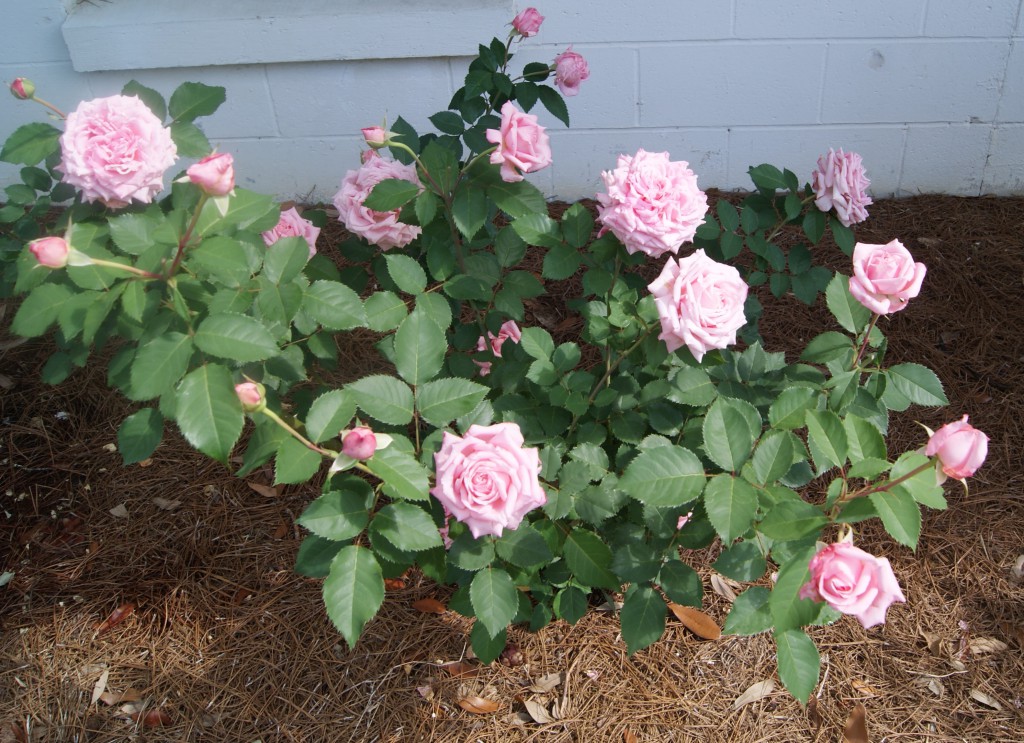
First flush of properly pruned Belinda’s Dream shrub rose. Image credit Matthew Orwat
Article written by Taylor Vandiver with additional content about sanitation by Matthew Orwat


















